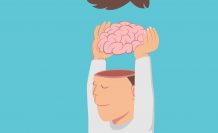What makes an effective teacher?
There was something about Mr Chipping. He was the beloved schoolteacher made famous in the 1934 book, ‘Goodbye Mr Chips’, and his story proved so irresistible that it spawned two films, a musical, a TV serial, a radio adaptation (featuring Sir Laurence Olivier) and a TV film. The story has, arguably, stood the test of time because good teachers today still aspire to be what Mr Chipping was back then – an effective teacher.
Good teachers can make a significant difference to the life of a student. To education guru, John Hattie, a positive interaction between student and teacher is the key factor in education today. “A teacher who walks into a classroom has to understand the effect he is having on these students, and he needs to know whether or not they’re being challenged,” he says. Professor Hattie, Director of the Melbourne Education Research Institute and the author of the ground-breaking book, ‘Visible Learning’, insists teachers need to give students the skills to become their own teachers. They also need to be able to evaluate the effect of their teaching on learning. “When we as teachers know our impact, we can truly make a difference.”
“When we as teachers know our impact, we can truly make a difference.”
John Hattie, Director of Melbourne Education Research InstituteThe skill set that today’s teachers bring to the classroom today is significantly more sophisticated than those in Mr Chipping’s arsenal. Teachers have a number of strategies they can deploy to engage students so that they not only meet their expectations, but exceed them. In many instances that means teachers tapping into knowledge that the students already hold. And it may be located across a number of platforms including verbal, visual or experience-based. “Any new learning starts with what you already know,” explains Associate Professor John Munro, Head of Studies in Exceptional Learning and Gifted Education at the Melbourne Graduate School of Education. Consider his example.
“In teaching science, students in Year 9 will know that everything falls at the same rate or at the same acceleration rate. If you hold up a brick and a piece of paper and ask the students which will fall fastest, their experience tells them that it will be the brick. But if you scrunch up the piece of paper, they will then tell you that you have changed things up.

“As a teacher, I have to be able to think about what I want them to know and to believe at the end of the teaching session. I have to think about what they might already know and I have to find ways of stimulating that knowledge. Boys in particular tend to code their knowledge in experience and they need to be supported to use those experiences to learn in the classroom. Otherwise they will become disconnected.”
In tapping into their existing knowledge, the teacher is also inviting the students to embark on a journey of learning that may have familiar features for them. It makes them feel successful early in the lesson to hear comments like, ‘You guys already know something about this’. “This s all about self-efficacy,” says Dr Munro. “It’s much more specific than confidence. It’s about their believing that they can be successful.”
Brought to you by Brighton Grammar School, Melbourne.
Muriel Reddy is a writer and journalist. This article is about Education
YOU MAY ALSO ENJOY
Subscribe to Understanding Boys. It’s free!
Got boys? Sign up for tips and advice you'll actually use.



